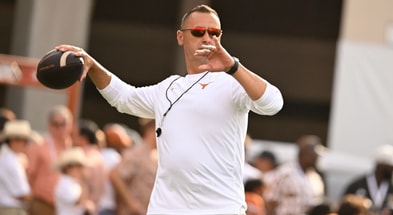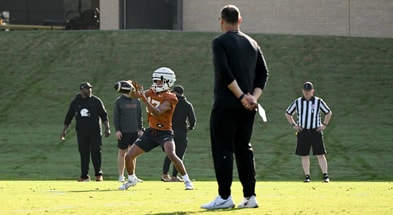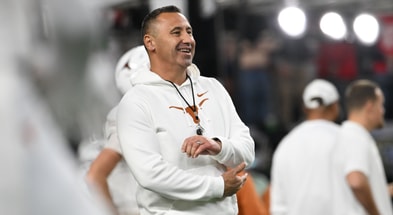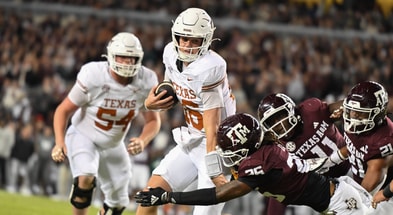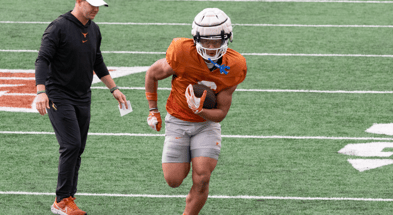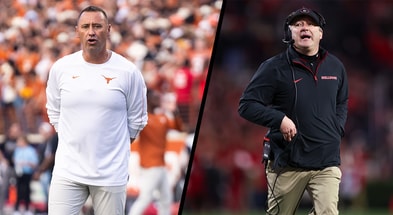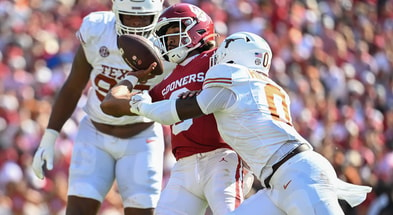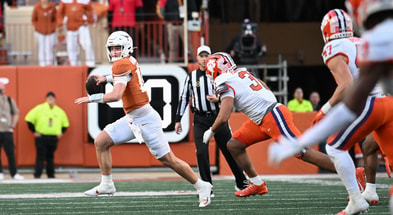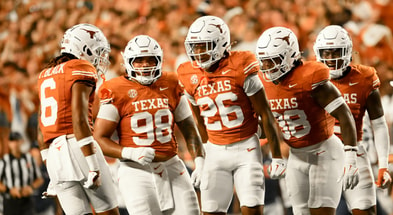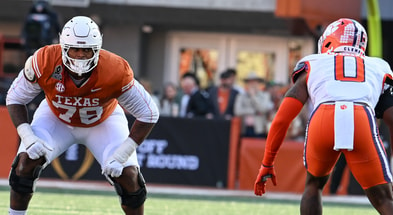Zone Run Schemes 101: How Zone Runs Really Work

Zone running is prominent all over college football, but what does it actually mean? Ian Boyd and LC break it all down.
[Join Inside Texas TODAY and get FOUR MONTHS for just ONE DOLLAR!]
David McClellan is a fiduciary financial advisor and partner with Forum Financial. He works broadly and deeply with his clients as a financial life coach. He specializes in financial planning and has contributed numerous articles to Kiplinger on the topic of retirement tax bombs. For a free intro consult, contact him at [email protected] or 312-933-8823.
This video kicks off a primer on zone running schemes, offering foundational insight into what zone blocking is and how it operates. The goal is to prepare viewers for deeper future analysis.
In zone blocking, all offensive linemen move laterally in unison, aiming to “flank” defenders and shift the point of attack, allowing the running back to find gaps based on how the defense reacts.
A major benefit of zone schemes is the natural development of cutback lanes. These emerge due to the defensive line’s struggle to maintain gap integrity while moving with the offense.
Unlike in gap schemes where backs hit a specific hole, zone blocking empowers running backs to read blocks and progress through multiple options—much like a quarterback scanning receivers.
In outside zone, offensive linemen aggressively step laterally to shift defensive gaps. A tight end may block back across the formation to seal the backside, enabling strong cutback potential.
Backside defenders are countered using hinge blocks or tight ends that isolate and block them—key to keeping cutback lanes viable.
Top 10
- 1New
Josh Heupel
Speaks on Nico Iamaleava
- 2
Joel Klatt
Defends Nico Iamaleava
- 3Hot
New details emerge
Nico Iamaleava leaves Vols
- 4Trending
NBA Mock Draft
Project all 59 picks
- 5
Tennessee fan
Lights Iamaleava jersey ablaze
Get the On3 Top 10 to your inbox every morning
By clicking "Subscribe to Newsletter", I agree to On3's Privacy Notice, Terms, and use of my personal information described therein.
The hosts discuss how understanding real-life zone reads enhances gameplay in NCAA 25, especially when running RPOs or QB run schemes.
Pros include flexibility and adaptability; cons involve difficulty against disciplined defenses, challenges in creating play-action without pulling linemen, and limitations when used in shotgun formations.
Zone blocking favors linemen who are mobile and cohesive over sheer size. Bigger players are used to obstruct and move defenders laterally, not to overpower them with brute force.
Coaches like Alex Gibbs emphasized running back accountability by ensuring linemen knew RB reads—fostering team understanding and discipline.
Join Inside Texas for Market-Leading Texas Longhorns Football coverage!
InsideTexas.com provides just what passionate Texas fans expect: Market-leading coverage of Longhorns athletics and recruiting.
Join the best Texas fan community and receive all the benefits that come with it:
- Elite team and recruiting coverage of the program you love
- Immediate access to any Longhorns break news
- Exclusive insider practice reports and year-round team info as well as board Q&A’s with IT staff
- High level discourse with the most passionate and informed Longhorns fans across multiple board forums.
- Market leading team analysis for those who are looking to increase their understanding of Steve Sarkisian and Pete Kwiatkowski’s preferred concepts
- So much more!
SIGN UP and ensure no Longhorns information gets by you: Join Inside Texas community today!
Talk about this story and many more with fellow Longhorn diehards on the Members Only forum.



